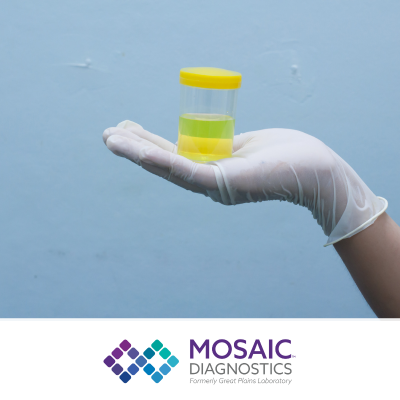Clinical Grand Rounds with Kiran Krishnan
The world is living through an unprecedented time with the pandemic spread of COVID-19. As clinicians, we hope you use this moment as an opportunity to educate patients on the power of preventative healthcare. Functional Medicine is at the forefront of treating the root causes and reducing the severity of symptoms, even in COVID-19. In the first episode of clinical grand rounds, we discuss: who is most susceptible, root cause issues linked to an acute COVID-19 response, and items in your functional medicine toolbox to help support your patients. By piecing together this puzzle, we can aid our patients in building a stronger and more resilient foundation to fight off viruses and chronic diseases.
Who is most at risk:
The COVID-19 virus is illuminating many vulnerabilities within our population. As the virus moved through China, scientists initially believed that it was the elderly who were at the highest risk. Now, as we monitor the virus spread throughout the world, we are witnessing the characteristics change. About 50% of those infected are between the ages of 18-49 and 26% of ICU admissions in NYC are of that age bracket. From preliminary findings, pre-existing conditions like hypertension, COPD, diabetes, and asthma are associated with a more acute response to the virus. This equates to roughly 50% of the US population presenting with one risk factor associated with a severe response to COVID-19. So, what are some the driving forces behind these risk factors?
What is at the root of the issue:
To answer this question, we need to take a deeper look into the renin-angiotensin system (RAS) within the body. The RAS system plays a key role in regulating blood pressure, electrolyte balance, and cellular growth. Angiotensin converting enzyme (ACE1) is a central component to the RAS system. ACE1 receptors are found on vascular endothelial surfaces throughout your body. These surfaces include tissue in the heart, blood vessels, intestinal tract, lungs, and kidneys. During an inflammatory stimulus, ACE1 is released, activating the RAS system. This leads to vasoconstriction, the recruitment of inflammatory cytokines, tissue remodeling, and fibrosis. If the damage persists, the pathway will continue to loop through this process of inflammation and tissue remodeling. While this healing and repair pathway is a protective response, the continuous assault in the body can lead to less tissue compliance and more damage. An example of this would include hypertrophic cardiomyopathy or left ventricular hypertrophy in the heart.
The counter effect of ACE1 is the release angiotensin converting enzyme II (ACE2), which has the opposite function. ACE2 inhibits ACE1 by competing for angiotensin. ACE2 promotes vasodilation, reduces cytokine recruitment, improves tissue compliance, and reduces fibrosis. As you can see, the duality of ACE1 and ACE2 are a delicate balance in our pathophysiology. While both ACE1 and ACE2 should only be expressed during acute stimuli, chronic low-grade inflammation can also upregulate the expression of both enzymes, and thus, both receptors.
The upregulation of ACE2 receptors in response to inflammation opens multiple doors for SARS-CoV-2, the virus that causes COVID-19, to enter the body. Based on the latest research of COVID-19, ACE2 receptors become a focal point for discussion as it appears to be the route of entry into the human body1. Spike proteins from the SARS-CoV-2 virus are able bind ACE2 receptors and insert their DNA into host cells. The affinity for the ACE2 receptor is the gateway into the host and a mechanism for replication.
Chronic Low-Grade Inflammation:
One of the main origins of systemic inflammation stems from the gastrointestinal tract. Our gut barrier serves as a shield to the outside world. However, in the presence of intestinal permeability, pathogenic bacteria and inflammatory compounds are able to cross into the bloodstream. Most notably is lipopolysaccharide (LPS). LPS is found within the cell walls of many Gram-negative bacteria. When those bacteria die, they release LPS. This stimulates an inflammatory cascade and immune response. LPS is also known to decrease the release of ACE2 that helps combat inflammation2. Furthermore, a recent article in the Journal of Gastroenterology found that 50% of patients diagnosed with COVID-19 presented with digestive symptoms and that COVID-19 patients with digestive symptoms have a worse clinical outcome and higher risk of mortality compared to those without digestive symptoms3.
The Functional Medicine Toolbox:
Without a conventional cure or treatment for COVID-19, it’s imperative for clinicians in functional medicine to help their clients improve resilience and a foundation against this virus. By reducing systemic inflammation, we can reduce the number of targets the virus can infect.
Here are some helpful tips from Microbiome Labs:
- Consume an antioxidant and fiber rich whole food diet. Choose from a variety of brightly colored fruits, vegetables, and healthy fats.
- Recondition the gut with a research-supported probiotic that’s shown to support the growth and diversification of keystone health-promoting bacteria. In a 2015 study, use of spore-based probiotics was clinically shown to reduce LPS translocation by 45% in just 30 days4.
- Reinforce the positive microbial changes with a prebiotic that selectively feeds beneficial strains and is clinically shown to improve the production of short chain fatty acids5.
- Rebuild the gut barrier and bind bacterial debris to prevent immune system activation and the inflammatory cascade6.
- Rebalance fatty acid levels in the body with an EPA, DPA, and PRM-fortified fish oil supplement. These ingredients help to stop inflammatory processes once complete7.
References:
- Guo, et al. The origin, transmission and clinical therapies on coronavirus disease 2019 (COVID-19) outbreak – an update on the status. Military Medical Research (2020) 7:11
- Sodhi, et al. Attenuation of pulmonary ACE2 activity impairs inactivation of des-ARG9 bradykinin/BKBB1R axis and facilitates LPS-induced neutrophil infiltration. Am J Physiol Lung Cell Mol Physiol. 2018 Jan 1; 314(1): L17–L31.
- Lei, et a. Clinical characteristics of COVID19 patients with digestive symptoms in Hubei, China: a descriptive, cross-sectional, multicenter study. Am J Gastro Enter. 2020 Mar 18.
- McFarlin, et al. Oral spore-based probiotic supplementation was associated with reduced incidence of post-prandial dietary endotoxin, triglycerides, and disease risk biomarkers. World J Gastrointest Pathophysiol 2017 August 15; 8(3): 117-126.
- Duysburgh, et al. A synbiotic concept containing spore-forming Bacillus strains and a prebiotic fiber blend consistently enhanced metabolic activity by modulation of the gut microbiome in vitro. International Journal of Pharmaceutics 2019.
- Detzel CJ, Horgan A, Henderson AL, et al. Bovine immunoglobulin/protein isolate binds pro-inflammatory bacterial compounds and prevents immune activation in an intestinal co-culture model. PLoS One. 2015;10(4):e0120278.
- Gobbetti, et al. Protectin D1 n-3 DPA and resolving D5 n-3 DPA are effectors of intestinal protection. PNAS 2017 April 11; 114(15) 3963-3968.











































